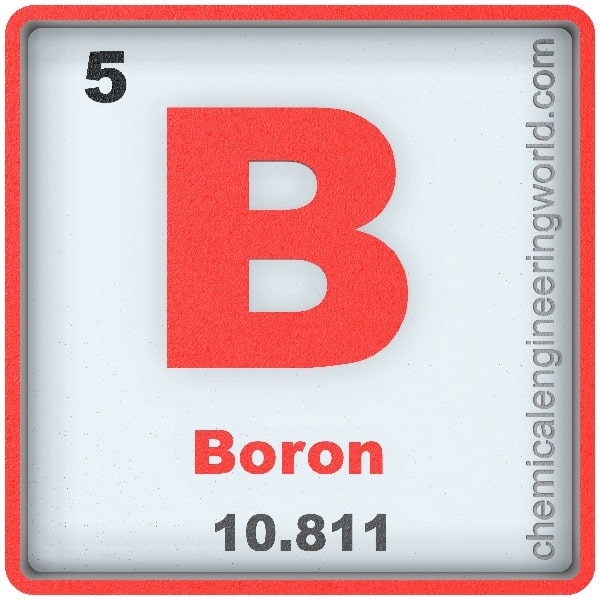The melting point of a material often serves as a litmus test for its thermal stability and structural integrity under elevated temperatures. Silicon, a quintessential semiconductor, boasts a melting point of approximately 1,410 °C. In stark contrast, boron, a metalloid with intriguing polytypic forms, exhibits a melting point surpassing 2,300 °C. This ocular disparity not only raises questions about the intrinsic qualities of each element but also prompts an examination of the underlying atomic structure and bonding phenomena associated with them.
To appreciate why boron possesses such a significantly higher melting point than silicon, one must first explore their respective atomic structures. Silicon is characterized by a diamond cubic crystal lattice structure, which is both robust and efficient for electronic conductivity. However, this lattice is primarily stabilized by covalent bonds formed between silicon atoms. These bonds, while strong, are relatively sensitive to thermal agitation. As temperature increases, the vibrational energy within the lattice intensifies, leading to a breaking point—this defines the melting threshold.
Conversely, boron exhibits a more complex polymorphism, existing in several allotropes, the most notable being rhombohedral boron. Its atomic arrangement is not only less straightforward than that of silicon but is also held together by a unique network of three-center bonds, often described as multicenter covalent bonds. This bonding configuration enables boron to form more covalent linkages than silicon, resulting in greater thermal stability and a significantly elevated melting point. Notably, the bond strength in boron arises from a synergistic effect of sp2 hybridization and shared electron pairs among three neighboring atoms, creating a robust and resilient three-dimensional network.
Another crucial aspect influencing the disparity in melting points lies in the presence of elemental variations in bonding types. While silicon demonstrates predominantly covalent characteristics, boron is notable for its ability to form clusters or boron-rich compounds. These compounds can exhibit varied forms of bonding, ranging from ionic to covalent, depending on the environmental conditions. This versatility suggests an adaptable nature, granting boron a certain thermal endurance and subsequently contributing to its higher melting point. One can liken boron’s array of bonding scenarios to a masterful conductor orchestrating a diverse ensemble, thus rendering it capable of sustaining heat without succumbing to structural compromise.
The role of atomic mass and electronegativity cannot be overlooked in this discourse. Boron, with an atomic number of 5, has a relatively low atomic mass yet maintains a distinct electronegativity that facilitates strong interactions with neighboring atoms. The hybridization leads to a higher density of states around the Fermi level, enhancing its thermal conductivity as well. In contrast, silicon, with an atomic number of 14, while heavier, does not possess the same electronegative advantage, causing its integrity under high thermal conditions to falter at comparatively lower temperatures.
Moreover, the thermal properties of these elements reflect their respective positions within the periodic table. Silicon’s group, known as the carbon group, has a sequential build-up of atomic features that render it a preferred material in electronics but not ideally suited for high-temperature applications. In contrast, boron exhibits remarkable resilience, a trait that can be linked to its position in group 13, where heavy elements tend to favor higher melting points due to increased bonding strength amongst d-electrons.
The unique appeal of boron also manifests in its applications across various industries. Its high melting point translates into its utility in high-temperature settings, such as aerospace engineering and the production of advanced ceramics. This property affords it a limelight that silicon cannot claim, despite silicon’s ubiquity in electronic devices. In essence, boron’s enduring nature parallels an ancient fortress standing resilient against the ravages of fire, while silicon reveals itself as a foundational figure, essential yet more easily subdued by the elements.
The allure of boron’s melting point, therefore, transcends mere numerical data; it offers insight into its atomic tenacity and the compelling tales woven into the fabric of chemical bonding. By comparing these elements, one not only discovers their thermal properties but also unravels a profound narrative about elemental characteristics and their implications in real-world applications.
To encapsulate, understanding why boron boasts a higher melting point than silicon involves a multidisciplinary approach that encompasses atomic structure, bonding dynamics, and the intricate interplay of elemental properties. Each aspect—be it covalent bonding phenomena, atomic intricacies, or periodic positioning—connects in a tapestry of scientific inquiry that ultimately highlights not just the individual traits of these elements but also the story of matter under thermal duress.
As science continues to probe deeper into these fundamental differences, the inherent qualities of boron persist as a subject of fascination—its higher melting point not merely a number, but a beacon illuminating the path toward advanced materials and technological innovation.












